Henry Spencer Moore (1898 – 1986)
Get a Moore Certificate of Authenticity for your painting or a COA for your Moore drawing or sculpture.
For all your Moore artworks you need a Certificate of Authenticity in order to sell, to insure or to donate for a tax deduction.
How to get a Moore Certificate of Authenticity is easy. Just send us photos and dimensions and tell us what you know about the origin or history of your Moore painting, drawing or sculpture.
If you want to sell your Moore painting, drawing or sculpture use our selling services. We offer Moore selling help, selling advice, private treaty sales and full brokerage.
We have been authenticating Moore and issuing certificates of authenticity since 2002. We are recognized Moore experts and Moore certified appraisers. We issue COAs and appraisals for all Moore artworks.
Our Moore paintings, drawings and sculptures authentications are accepted and respected worldwide.
Each COA is backed by in-depth research and analysis authentication reports.
The Moorecertificates of authenticity we issue are based on solid, reliable and fully referenced art investigations, authentication research, analytical work and forensicstudies.
We are available to examine your Moore painting, drawing or sculpture anywhere in the world.
You will generally receive your certificates of authenticity and authentication report within two weeks. Some complicated cases with difficult to research Moore paintings, drawings or sculpture take longer.
Our clients include Moore collectors, investors, tax authorities, insurance adjusters, appraisers, valuers, auctioneers, Federal agencies and many law firms.
We perform Henry Spencer Moore art authentication, appraisal, certificates of authenticity (COA), analysis, research, scientific tests, full art authentications. We will help you sell your Henry Spencer Moore or we will sell it for you.
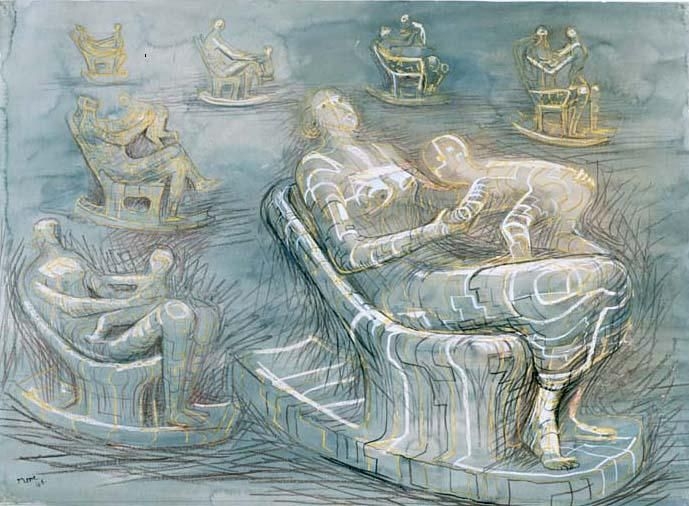
Watercolor on Paper 52.1 x 70.8 cm
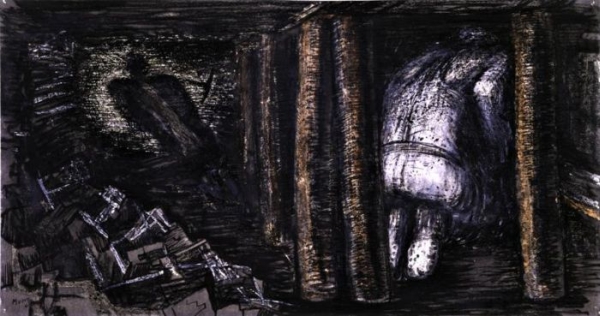
Pen, chalk and Ink, wax and pencil 30 x 56.7 cm
Henry Moore was an English artist, known for his bronze sculptures of abstracted figures. Many of his sculptures are now erected in public spaces around the world. Moore was born in Castleford, West Yorkshire, England. His father was a mining engineer. His father made a point to educate his children, so that they would not have to work as miners.

1953 Bronze and patina 28 3/16 inches (71.7 cm)
The Solomon R. Guggenheim Foundation
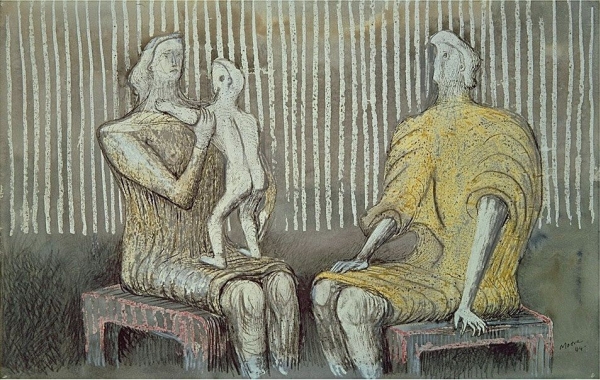
1944 Watercolor, pen & ink and crayon on paper 14 1/8 X 21 15/16 IN. (35.9 X 55.7 CM.)
Moore first became interested in sculpture as an elementary school student, after learning about the Renaissance sculptures of Michelangelo. After Secondary school, Moore worked for a short while as a student teacher, before being called to military duty at the age of eighteen. Moore served in the Prince of Whale’s Own Civil Service Rifles regiment.

1948 Watercolor, gouache and crayon with pencil under-drawing on paper 11 1/2 X 9 1/2 IN. (29.2 X 24.1 CM.)

1964 Bronze 10 x 7 x 7 3/4 in. (25.8 x 17.6 x 19.5 cm)
When the war ended, Moore received money to continue his education, and enrolled at Leeds School of Art. The school set up a studio for Moore, who was the first student to study sculpture. Moore later met Barbara Hepworth, who also became a sculptor. A few year later Moore was rewarded a scholarship to study at the Royal College of Art in London. In England’s capital, studying primitive art in ethnographic collections inspired Moore. Moore also started looking at the work of modern sculptors such as Constantin Brancusi and Frank Dobson.

1935 Cumberland alabaster 29.2 29.5 x 17.1 cm

(1952, cast 1953-54) Bronze 1/2 x 1 5/8 x 1 3/4 in. (24.1 x 3.9 x 4.4 cm)
In 1924 Moore won a scholarship to travel to Italy, where he studied the Old Masters and made an excursions to France. While in Paris, Moore saw a cast of a Tolec-Maya from Mexico. The figure would become a motif in his future work.
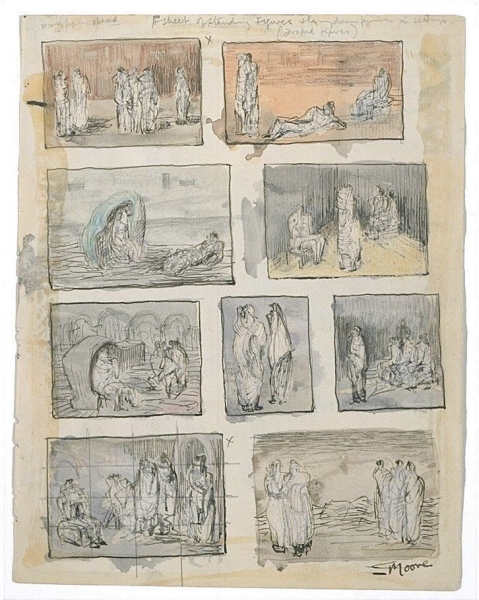
(CA. 1942-1949) Watercolor, pen & ink, crayon and pencil on paper 8 7/8 X 6 7/8 IN. (22.4 X 17.4 CM.)
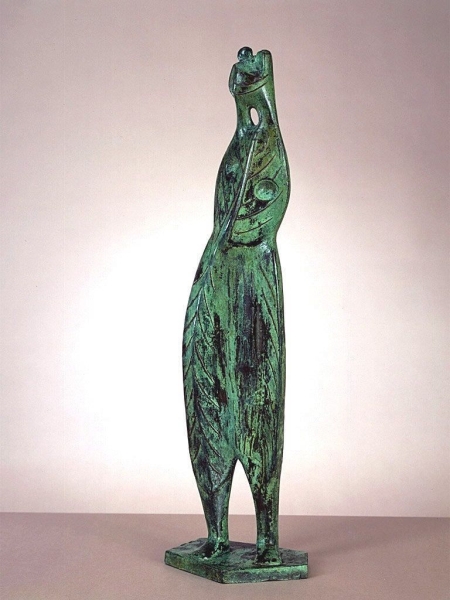
(1952, cast 1953-54) Bronze 19 X 5 1/2 X 3 7/8 IN. (48.2 X 13.9 X 9.6 CM.) INCL. BASE H: 1/2 IN. (1.3 CM.); WT: 9 LB. (4.1 KG.) INCL. BASE
When Moore returned to London he started teaching at the Royal College of Art part-time while working on developing his own sculptures. In 1928 he completed his first public sculpture, “West Wind” in London’s Underground.
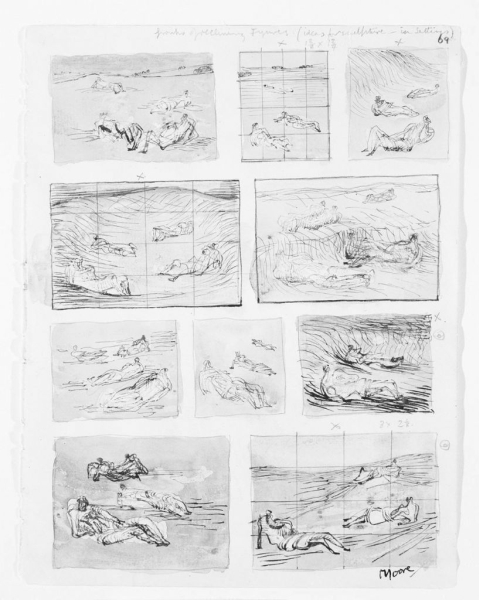
(CA. 1942-1953) Watercolor, pen & ink, pencil and crayon on paper 8 7/8 X 6 15/16 IN. (22.4 X 17.5 CM.)
By 1933, Moore became more interested in Surrealism and helped to organize the London International Surrealist Exhibition from 1936 to 1937. Moore held a teaching position at the Chelsea School of Art, until its relation to Northampton during the outbreak of the Second World War. Moore was hired as a war artist, and often slept in the London Underground to escape dangerous activity above ground. In 1940 after his home was hit with shrapnel, Moore and his wife moved to a farmhouse in the Hoglands. Moore remained in this location for the rest of his life, developing an extensive studio and workshop.
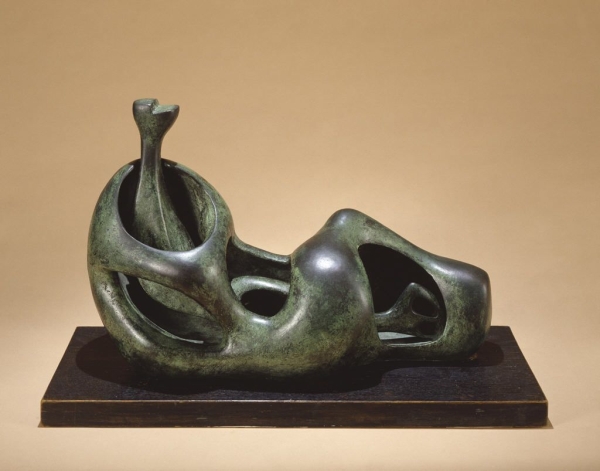
(1951, cast 1952-53) Bronze 13 1/2 X 21 1/8 X 7 5/8 IN. (34.2 X 53.5 X 19.3 CM.)
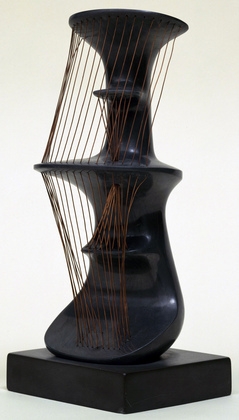
1939-40 Cast lead and copper wire 9 3/8 x 4 1/8 x 4″ (23.8 x 10.3 x 10 cm)
© 2010 Henry Moore Foundation
In 1946 Moore’s wife gave birth to a girl, Mary. Moore soon produced a series of “Mother and Child” compositions, in response to his first-born. While Moore enjoyed fatherhood, he was busy with commissions in Paris, Oslo and Chicago among other cities. In 1951 Moore rejected knighthood, but became a trustee of the Tate Gallery and the first president of the Turner Society.
Today Moore’s work can be seen in collections around the world. The Art Gallery of Ontario, Canada owns the most extensive Moore collection. Do you think you own a sculpture or drawing by Henry Moore? Contact us. We are the Moore experts.
